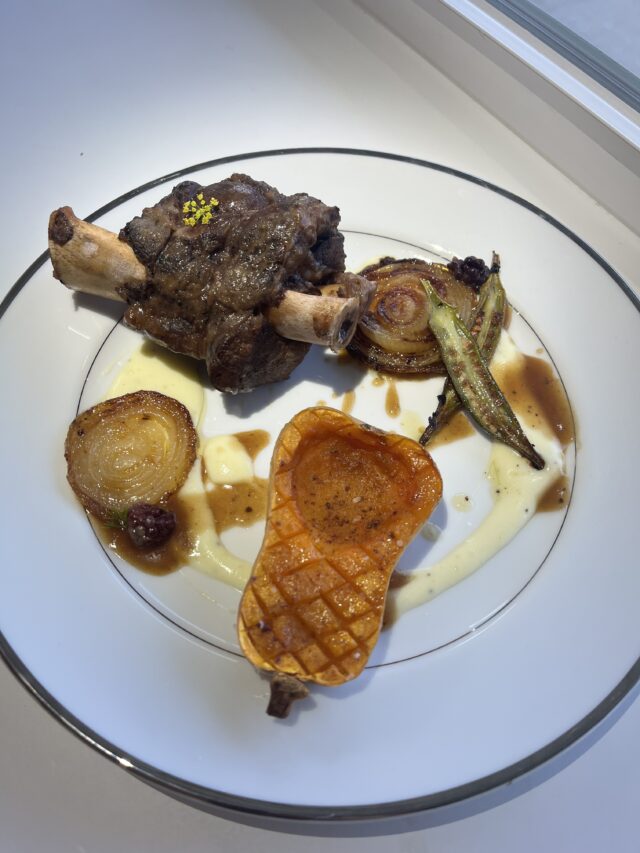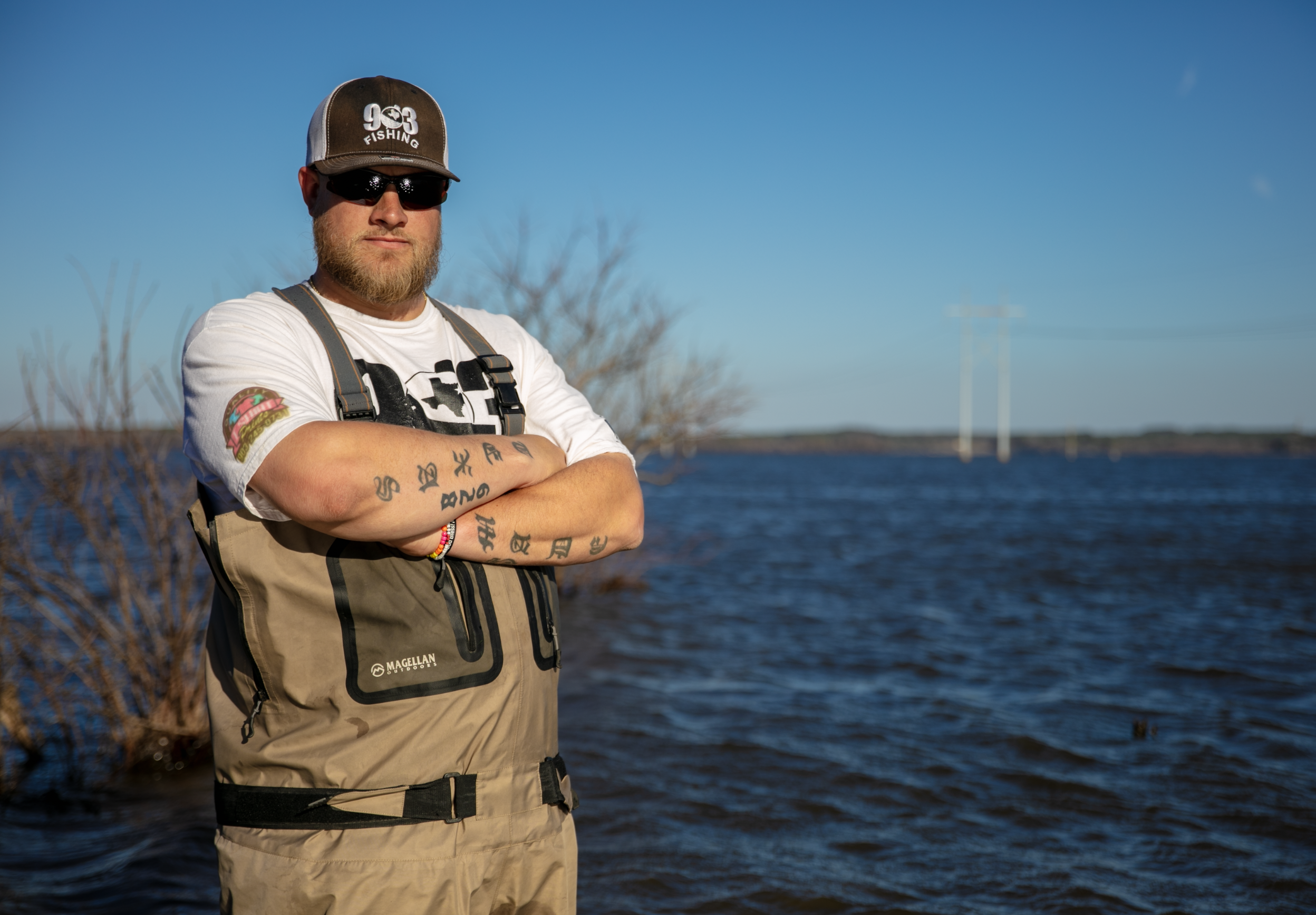by Megan Strother
I was blessed to be raised by great hunters and gatherers, as well as excellent cooks. Growing up, I didn’t quite understand that those two things had everything to do with each other.
Hunting was more than a personal victory to the hunter. Not only were they scoring their biggest game of the season, or even their life, they were also providing nourishment that would feed their family for months to come. There is pride in feeding your family straight from the field to your table.
My name is Megan Strother and I grew up in small town East Texas. The only traveling I really did growing up was either going on family vacation to Florida or hunting trips all around Texas with my father. By my senior year I had the itch to give traveling a try. Being that food was such a large part of my life growing up and culinary offers opportunities everywhere, it only made sense to continue my education studying Culinary Arts. I found an awesome university, Johnson & Wales University, that not only gave me the opportunity to study culinary but it also allowed me to travel America while gaining my college degree. My freshman year I studied hospitality while working front of house at a Bass Pro Shop restaurant in Denver, Colorado. After completing my freshman year of college I moved on to study seafood cookery, alongside of butchery in Providence, Rhode Island. My college degree required an internship and I was lucky enough to get accepted to work with the Hemminway’s Company, one of the highest rated seafood restaurants in New England. Once I completed my studies in seafood cookery and working in a high production kitchen, I continued to expand my education by working as a butcher at Persimmons, another noted restaurant in Providence. Daily, I would break down half a pig, half a cow, and several cases of locally raised chickens. When I would tell my friends that I worked in a seafood restaurant breaking down crustaceans and fish all day or that I was a butcher for a really beautiful restaurant they all responded pretty much the same. “Eww, how can you cut up meat” and “Yuck doesn’t that gross you out?” I had never really thought about it that way. I had been processing and breaking down animals for the better part of my life while hunting with my father. When I wanted to go on hunting trips with my dad his response was always “If you get something, you have to field dress it yourself.” When I was younger it was like a game to me to prove that I could not only field dress the animal myself but also to do a good job. After finishing my associates degree in food service management in Providence, I relocated to Charlotte, North Carolina finishing my bachelors degree in food sciences while running a kitchen at a New York style pizza restaurant. After all that traveling and learning, I finally decided to work my way back to East Texas where I have been working as a culinary arts instructor for high schoolers ever since.
When my grandmother, mom, or father would prepare meat or vegetables that were harvested during the season we would, of course, cook the common dishes, such as, fried deer steak, jalapeño poppers stuffed with quail breast, or the classic deer chili in the colder months. (Mmm, with mom’s warm corn bread!) But my favorite dishes were the ones that we didn’t get to cook as often, such as venison roast or the classic Osso Buco. [ɔssoˈbuːko]
Osso Buco is a classic northern Italian dish usually centered around veal shanks (or lower leg). This is a rich dish made with a mirepoix, pan sauce, and encompasses the full flavor of the venison shank.
Before getting into this recipe I wanted to do a deep dive into the different aspects of this dish and why they are so important.
Mirepoix [meer-PWAH]
A Mirepoix is a mixture of uniformly chopped vegetables, used to add flavor, add nutrients, and color to stocks, soups, and several classical dishes; usually consisting of onions, celery, and carrots.
Deglazing your pan
Deglazing means to swirl a liquid, such as wine or stock, in a sauté pan to dissolve cooked particles of food that have stuck to the bottom of the pan. You might be thinking to yourself “Why would I want to dissolve cooked food particles??!” After dusting our shanks and searing them in a super hot pan, you will see there are food particles remaining. By deglazing these you can create a very flavorful pan sauce or even gravy, which not only tastes delicious, but really celebrates the flavor of the venison.
Let’s get started on the good stuff,
COOKING!
Osso Buco
Carrots – 2 small, diced
Onion – 1 small, diced
Celery – 5 stalks, diced
Garlic – 2 tablespoons, minced
Tomato Paste – 2 Tablespoons
Cabernet – ½ cup
Blackberrys – 6 oz
Stock – 6 cups (at least)
Salt – to taste
Pepper – to taste
Flour – as needed for dredging
Oil – 3 Tablespoons
Venison Shanks – 2 shanks cut to 3 inches
Add enough oil to a heavy pot to coat the bottom and bring to a very high heat. (Right before oil is smoking.) Heavily season your shanks with salt and pepper and lightly dust in flour. Sear in hot oil on all sides.
Remove seared shanks and set aside. Add onion, celery, and carrots. Cook until onions begin to brown. Add in garlic and saute until fragrant. Add tomato paste and caramelize for at least 5 minutes. Deglaze pan with wine and remember to scrape the bottom of pan until all brown bits are dissolved.
Add blackberries to pan sauce and let simmer for about 2 minutes.
Add shanks back to pot. Add enough stock to just cover the top of the shanks. Reduce heat to a light simmer, and cover. Let simmer for 3 to 4 hours or until meat is fall-off-the-bone tender.
To serve, you will remove shanks from the pan. (If you tied them, remove string from the shank.) Place shank over a mashed potato or a polenta. Drizzle pan sauce. (The liquid left in the pan the shanks were cooked in.)
Enjoy!!!
Venison shank meat is often considered low quality or nondesirable because of its toughness. Most hunters that process their own deer will just scrap the shank and grind it down, if they even consider it worth processing. There are several classical dishes out there that utilize cuts of meat that can be considered too tough. Osso Buco, being a dish created to showcase veal shanks, shows us that there are ways to make tougher and more challenging cuts worth cooking for your family and friends.
I truly hope you give this dish a try!
I don’t think you’ll ever look back.
Chef Megan Strother












